You have just arrived at the airport of Tuxtla Gutierrez, Chiapas, Mexico, half an hour ago. Now you are on a highway snaking its way upwards 2500 meters, on your way to San Cristobal de las Casas, the home of the Zapatistas and the central meeting ground for the local indigenous groups like the Chamulas. On your right you can see the world falling away as you get closer to the clouds. It is your first time here. You have read the travel guides, and searched the internet for things to do. Everywhere you looked, you ran across the same things: Palenque, Chamula, Lagos de Montebello. But you want something different. You want to see the real Chiapas and visit places that are not overflowing with tour groups. As you look out at the sky, you see two green streaks. As you focus in on them, you realize that it is actually a pair of parakeets flying towards some unknown location. "Where did they come from?" you wonder….
Sima de las Cotorras
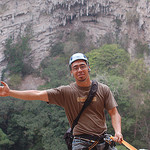
Ray climbing down into the Sima de las Cotorras, Chiapas
The clouds part and you find yourself looking at a valley surrounded by green mountain tops. In the middle of this valley you see signs of life. San Cristóbal de las Casas. You can already make out the the churches of San Cristóbal and Guadalupe on their respective hills, looking over the town. It must have rained recently, because you see puddle of water all over the road. You think to yourself, "they almost look like lakes…"
Lagos de Colón
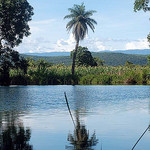
View while hiking in Lagos de Colón
The taxi driver turns from the main road onto Av. Insurgentes. You have just entered the historic downtown of San Cristóbal. Colonial style buildings surround you. As you are driving, you pass an incredible potpourri of humanity. Europeans, Americans, Asians, Mexicans and numerous indigenous groups. As you try to take it all in, your thoughts are interrupted by a grumbling sound. It's your stomach. You realize you haven't eaten since breakfast 10 hours ago. "Where could I get a bite to eat?" you wonder…
Comitán
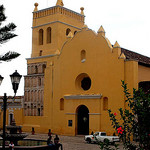
The principal church in Comitán
You fight down the growing feeling of hunger. First things first. You need to find a hotel. Luckily there seems to be dozens on every block in San Cristóbal. You ask the taxi driver to drop you off in front of one that looks nice and seems to fit your budget. You pay your fare and get your bags out of the trunk, but as you turn around to enter the hotel, you find you can't pass. You are surrounded by dozens of indigenous women and children saying "cómprame". You don't speak Spanish, but it is not hard to figure out that they want you to buy one of there multicolored bracelets, belts or Subcomandante Marcos dolls. "Where did they all come from?" you ask…
San Juan del Río
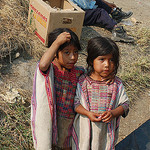
Some friends Ray met in San Juan del Río.
…You fought your way through the crowd that surrounded you outside. You are now the proud owner of five colorful bracelets and a clay figure that looks to you like a turtle. You ask if there are any rooms available. In broken English the girl at the reception says "Yes," and gives you a list of the prices. The prices are fair. As the receptionist prepares the paperwork, you scan the tour pamphlets laid out on the front desks. There are hundreds, each selling tours to the same places. Then one catches your eye. This one is not glossy or professional like the others. It is black and white with nothing more than a pyramid on the cover. "Where is Toniná?" you ask the receptionist…
Toniná
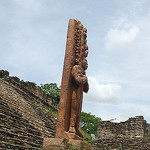
Hiking to the top of Toniná
You are finally here. Settled into your hotel room. Exhausted but excited. All that is left to decide is, "What am I going to see tomorrow?"










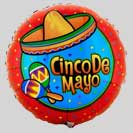 Celebrate Cinco de Mayo, commemoration day of the Battle of Puebla (1862), by learning some real Spanish -- not just the word cerveza -- south of the border. Be in impressive, colonial Puebla itself by then, or somewhere else in Mexico, to join the fiesta.
Celebrate Cinco de Mayo, commemoration day of the Battle of Puebla (1862), by learning some real Spanish -- not just the word cerveza -- south of the border. Be in impressive, colonial Puebla itself by then, or somewhere else in Mexico, to join the fiesta.
Leave a Reply
You must be logged in to post a comment.